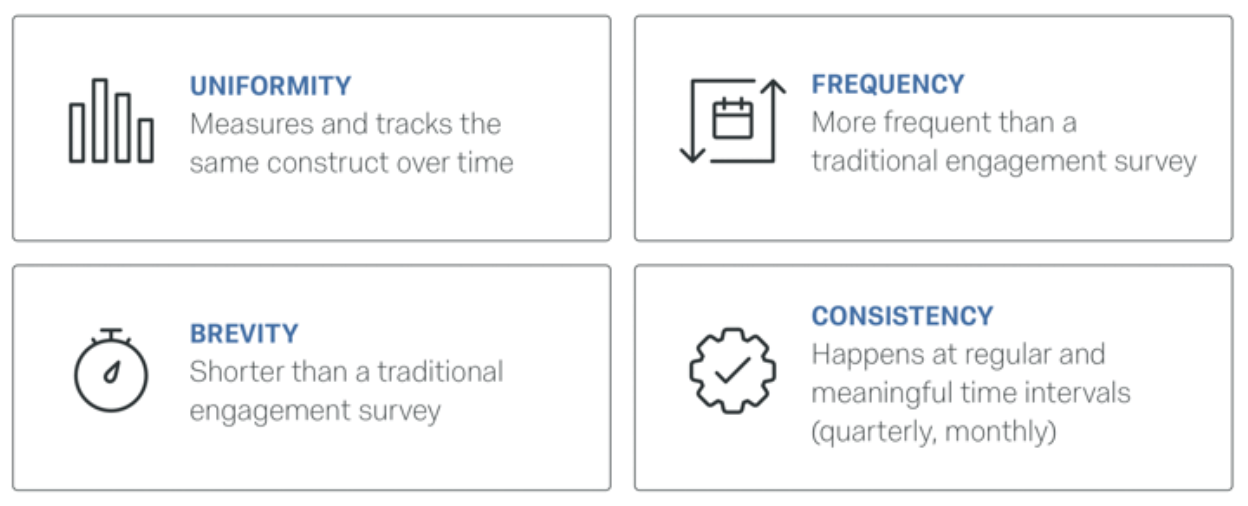Truverus Pulse Survey Platform
While full-scale survey programs are an extremely effective method for delivering insights, they can also be limited in their flexibility and ability to capture frequent changes and developments in stakeholder engagement and experience.
In fact, organizations can no longer afford to wait a year or two to gather employee and organizational data. Pulse surveys are the answer to providing more frequent, agile, and actionable feedback to drive organization impact.
Now, people analytics teams can easily, quickly, and flexibly deploy pulse surveys, collect feedback into easy-to use dashboards, analyze data in real-time, and manage the entire action and impact reporting from within a single dashboard.
Shorter, more frequent check-ins
True pulse surveys meet the following conditions:
- Tracks the same item over time (for example, “How likely are you to recommend your company as a place to work to people you know?”)
- Is considerably shorter than an other stakeholder surveys and easier to complete
- Is more frequent than traditional feedback measures (i.e., more than once a year)
- Happens at a regular time interval or directly after an “ (most organizations use them quarterly or monthly)
Pulse surveys are just one of a number of different feedback mechanisms you could choose to use outside of any stakeholder survey. Truverus has been developing and managing survey programs for over 20 years of and we’ve come up with a methodology to help companies define whether pulses should be their best-fitting approach.
What Makes Pulse Surveys Effective?
Pulse surveys are growing in popularity, not only because they are shorter and reduce the amount of time it takes employees to give their feedback, but also because they introduce a new dimension to results analysis: time.
Where an annual engagement survey is a once-a-year snapshot of your employees’ engagement, pulses allow you to track items month-to-month or quarter-to-quarter so you can check in (and react) more regularly, plot trends over time, and start to link improvements back to actions you’ve taken in the organization.
Pulse surveys are more agile than traditional methods of collecting employee feedback (e.g. annual census survey), giving employees the opportunity to provide feedback more frequently, and organizations the chance to react more quickly to that feedback.
Traditional employee surveys, such as the annual census engagement survey, tend to be too infrequent. After all, only asking for feedback once a year means it’s incredibly difficult to check in on the progress of action plans, as well as being difficult to align feedback measurements with business outcomes.
